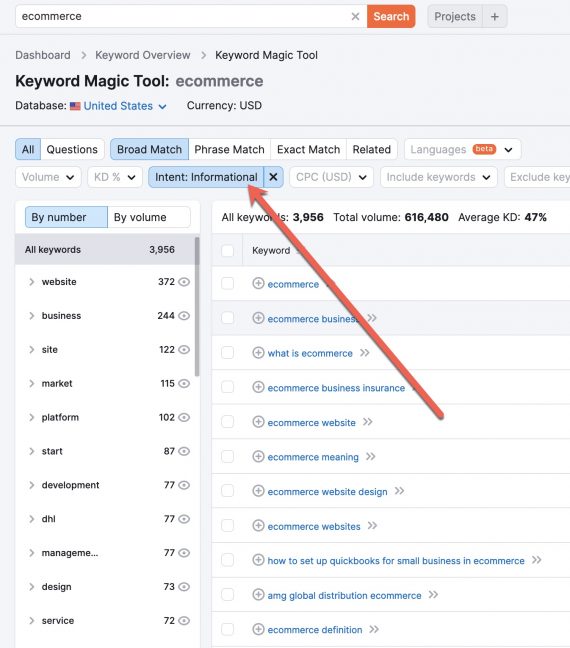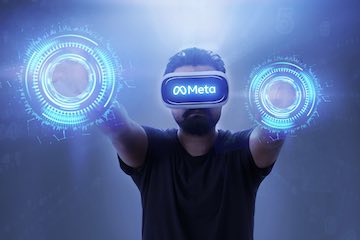According to Apple, Mail Privacy Protection stops senders from using invisible pixels to collect information about the user. The new feature helps users prevent senders from knowing when they open an email, and masks their IP address so it can’t be linked to other online activity or used to determine their location.
iCloud Private Relays block IP and web browsing behavior from advertisers. As a result, advertisers should prepare to see an impact on Location Targeting and Device Graphs.
Credit: Apple Newsroom According to Emery, mobile app advertisers will need to be “strategic about how and what they message consumers about” to combat complete notification opt-out.
According to Apple, with App Privacy Report, users can see how often each app has used the permission they’ve previously granted to access their location, photos, camera, microphone, and contacts during the past seven days. Users can check whether this makes sense to them, and take action by going to the app in Settings if it doesn’t. Users can also find out with whom their data may be shared by seeing all the third-party domains an app is contacting.
Below is a chart from Tinuiti’s Email Marketing experts highlighting how we expect Apple’s latest changes will impact various email metrics from open rates to revenue:
“Private Relay is part of the iOS 15 update but only works when an iCloud subscriber enables it. Private Relay routes traffic through other servers, hiding your IP address from websites you visit, and hiding traffic from the network. This is similar to how a VPN works, using a single server between you and the website to route and encrypt traffic. Private Relay adds another server, one not controlled by Apple, to further obfuscate your behavior online. Apple doesn’t see the website you’re trying to access, and the other server doesn’t see who you are. Private Relay also eliminates fingerprinting, something ITP can’t do.”
“In other words, Apple can’t track users, or the websites they visit. Nor can the ISP or ad networks,” Parsad said.
As part of the latest update, Mail app will now automatically obscure user IP addresses and locations from tracking pixels. Among other changes, an “App Privacy Report” option in settings will also summarize how often any given app accesses users’ locations, photos, etc. to flag any unwanted data shares. Here’s how Parsad explains it:
“Apple’s ad attribution solutions are only supported in Safari, to be a fully supported standard, it needs to be implemented on other browsers. If Apple can’t get there, we’re going to have two very different ways of measuring ad effectiveness between Apple’s Safari solutions and Google’s Chrome bird-themed solutions,” Parsad said.
Apple’s Worldwide Developer Conference: Latest Features And Next Steps for Advertisers
Introducing iCloud+ (plus)
As we mentioned earlier, this means advertisers can’t utilize the user’s IP address as a unique identifier to connect their activity across websites and build a profile about them.
Keep in mind, although email upper funnel metrics are likely to take a hit as a result of Apple’s latest changes, this will open up new opportunities for stronger focus on bottom of the funnel metrics like purchase, conversion, etc.
What is Private Relay?
Privacy-Preserving Ad Attribution looks to replace what cookies did for attribution, but the work is done in the browser. The goal of this proposed solution is to allow advertisers to measure the effectiveness of their web-to-web and app-to-web ad campaigns on the web without compromising on user privacy.
“Focus” Updates to Notifications allow users to customize how they receive messages (calls, texts, push notifications from apps, etc) based on what they’re doing (driving, work hours, sleeping, gym time, etc).
According to Apple, Private Relay is a new internet privacy service that’s built into iCloud, allowing users to connect to and browse the web in a more secure and private way. When browsing with Safari—or using DNS queries, or any app traffic to insecure websites—Private Relay ensures all traffic leaving a user’s device is encrypted, so no one between the user and the website they are visiting can access and read it, not even Apple or the user’s network provider.
“Brands should always consider the value to the consumer with each notification. If there is no strong value, don’t send it.”
But according to some advertisers, Apple’s latest solution is not enough.
“It doesn’t prevent the data from going out, but it shows the user what is happening with their device. With the App Privacy Report, there is potential for increased opt-out of app tracking via ATT or at the device level in addition to the iOS14.5+ push,” Liz Emery, Sr. Director, Mobile and Ad Tech Solutions at Tinuiti said.
The big question is how will advertisers collect customer information moving forward? Many marketers are scrambling to figure out alternative options as we approach Q4.
According to Apple, “Hide My Email” lets users share unique, random email addresses that forward to their personal inbox anytime they wish to keep their personal email address private. Built directly into Safari, iCloud settings, and Mail, Hide My Email also enables users to create and delete as many addresses as needed at any time, helping give users control of who is able to contact them.
According to Apple, this separation of information protects the user’s privacy because no single entity can identify both who a user is and which sites they visit.
“The latest feature allows users to essentially create ‘burner’ emails to sign up/register for new accounts. Emails to the burner address will forward to the user’s real email address to limit personal information shared with advertisers and to limit spam,” Leah Lloyd, Group Director, CRM & Email at Tinuiti Customer said.
What is the potential impact of Privacy Relay on Paid Media advertisers?
Apple Inc. made waves at the Worldwide Developer Conference (WWDC) earlier this month with the introduction of several new privacy-focused features designed to protect users and their data. But with Privacy Relay the traffic flow changes to: User > Apple ingress server > egress server > Web – Liz Emery, Sr. Director, Mobile and Ad Tech Solutions at Tinuiti
What is Hide My Email?
Typically, the traffic flow for a user will look like this: User > Web
“The Location Targeting and Device Graphs are both going to be significantly limited on iOS 15 devices as a result of IP blocking. As it relates to Location Targeting, IP addresses will be mapped to regions but not to the individual’s actual location,” Kolin Kleveno, SVP, Addressable Audiences at Tinuiti said.
What is Mail Privacy Protection?
“The Location Targeting and Device Graphs are both going to be significantly limited on iOS 15 devices as a result of IP blocking. As it relates to Location Targeting, IP addresses will be mapped to regions but not to the individual’s actual location,” Kolin Kleveno, SVP, Addressable Audiences at Tinuiti said.
How will App Privacy Reports impact marketers?
“Experiences could suffer if you’re using burner emails with brands. Third-party login systems already cause headaches for user experience and customer support teams. Adding burner emails adds another layer of friction and muddies up databases. The overall impact of Apple’s Hide my Email feature on lifecycle marketing and email advertisers will largely depend on the adoption rate, which is still to be determined,” Lloyd said.
What are “Focus” Updates for Notifications?
iCloud+ is a new service upgrade (part of the existing iCloud subscriptions). The latest version is Apple’s attempt to amplify their existing cloud with new features including a Private Relay, Hide My Email and unlimited storage for HomeKit-enabled home security cameras. Users must activate/opt-in to use the latest solutions.
“As marketers, we’re not surprised by the continued addition of privacy features in response to consumers’ wants, but it will make it a lot harder for marketers to gauge the success of their media efforts in the same way as before. Traditional KPIs like Email Open will become more vanity and a renewed focus on down-funnel metrics will continue to grow across all channels including email, web and in-apps.”
“Privacy has been central to our work at Apple from the very beginning,” said Craig Federighi, Apple’s senior vice president of Software Engineering in a press release. “Every year, we push ourselves to develop new technology to help users take more control of their data and make informed decisions about whom they share it with. This year’s updates include innovative features that give users deeper insights and more granular control than ever before.”
What is Privacy-Preserving Ad Attribution?
Credit: Apple Newsroom
The tech giant maintains a strategic stance that privacy is a user right and is taking steps to grant users more ability to opt out of any type of targeting or tracking.
Launched in 2011, iCloud is a cloud storage and cloud computing service from Apple Inc. with an estimated 850 million users. For years, iCloud has enabled users to store data such as documents, photos, and music on remote servers for download to iOS, macOS or Windows devices, to share and send data to other users, and to manage their Apple devices if lost or stolen.
“Apple and Google are creating two very different browser standards. If neither supports the work of the other, we’re going to have two very different environments when it comes to understanding campaign effectiveness”
“At Tinuiti, we believe trust is a bi-directional relationship so we’re facing a major opportunity to meet consumer needs for transparency in data collection and usage. As an industry, we’re pivoting away from dollar and cents marketing to creating strong, custom ad experiences.”






